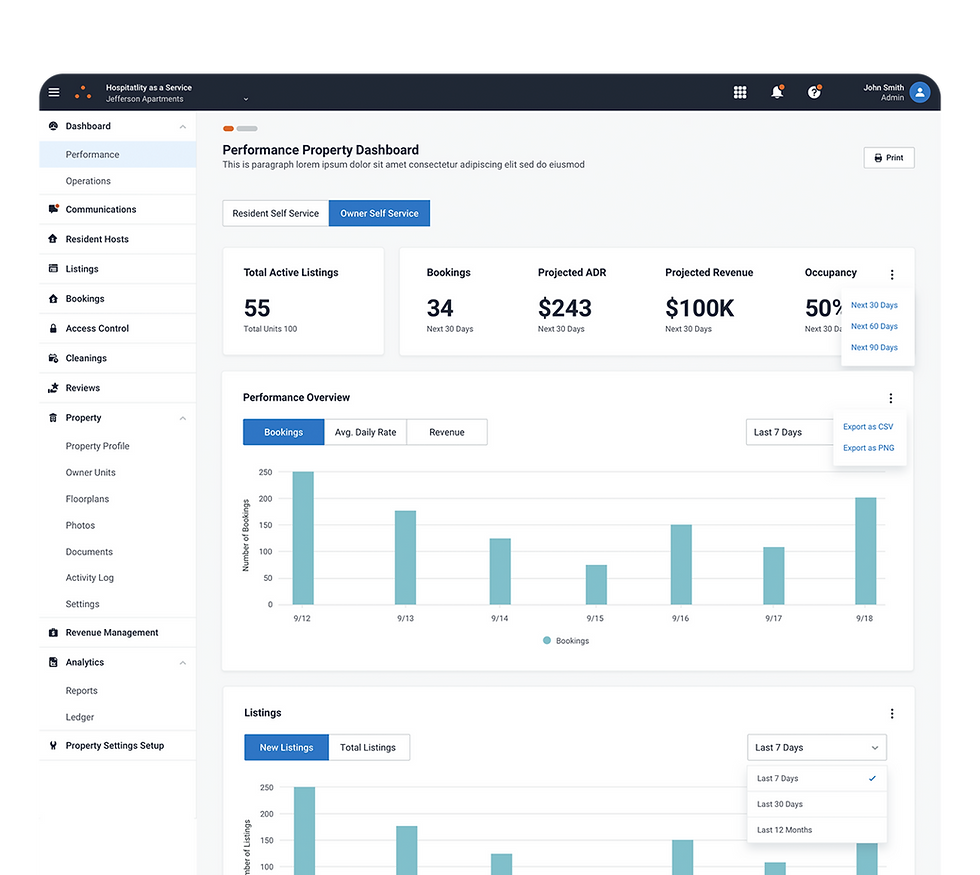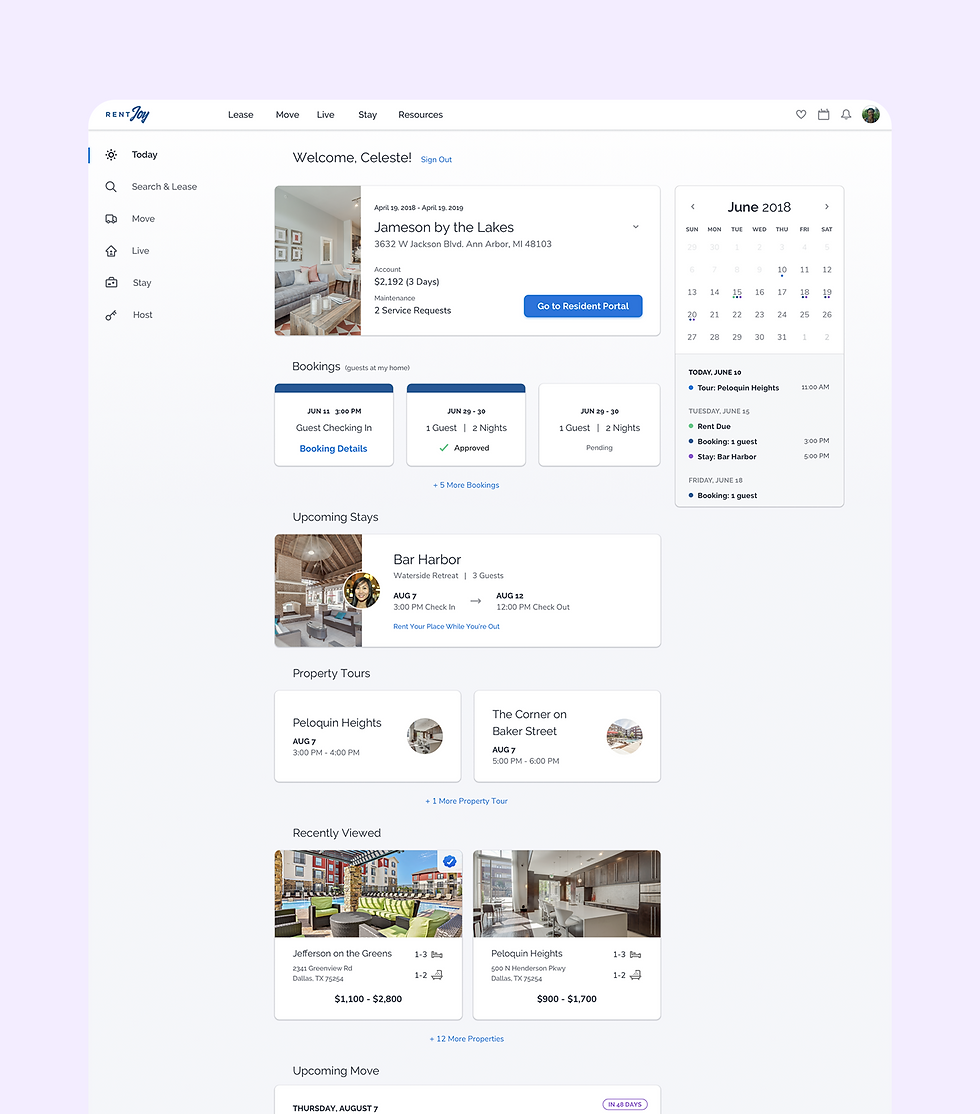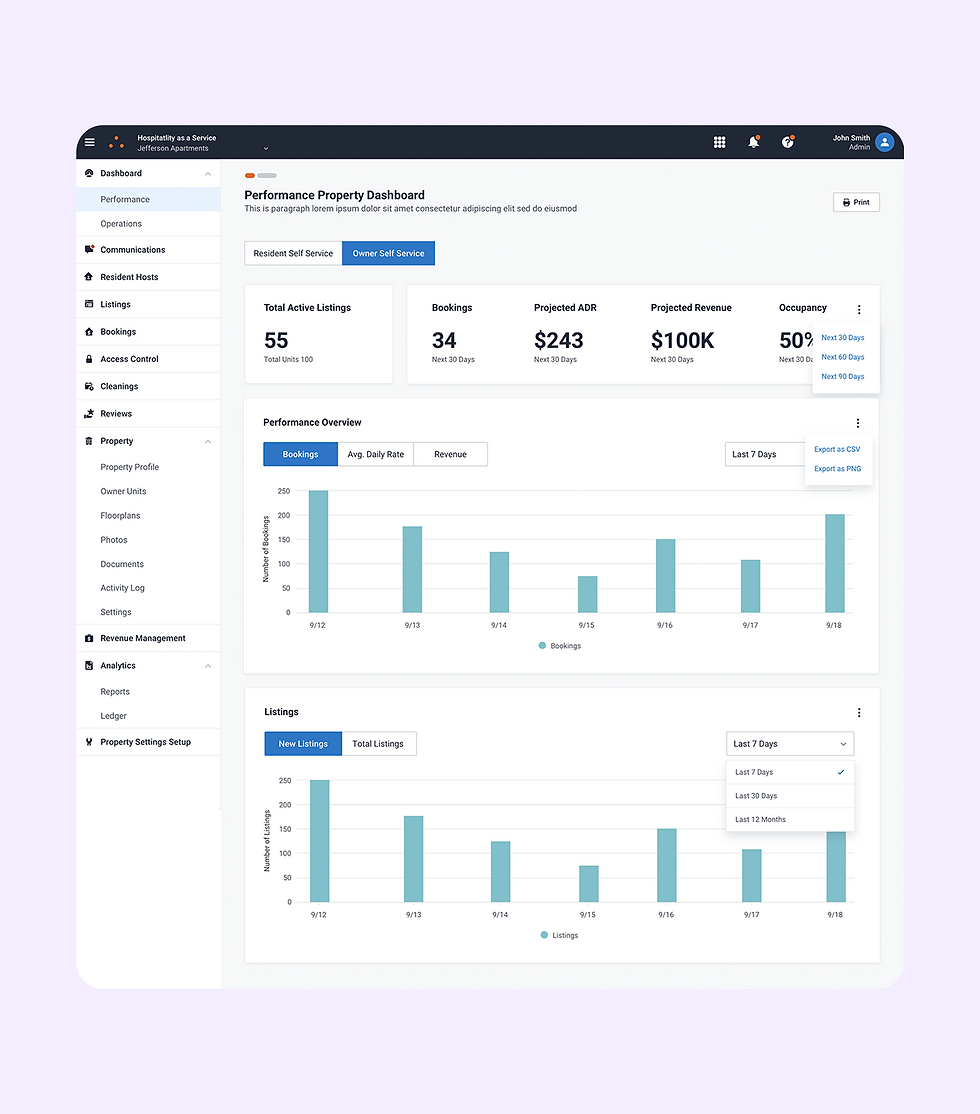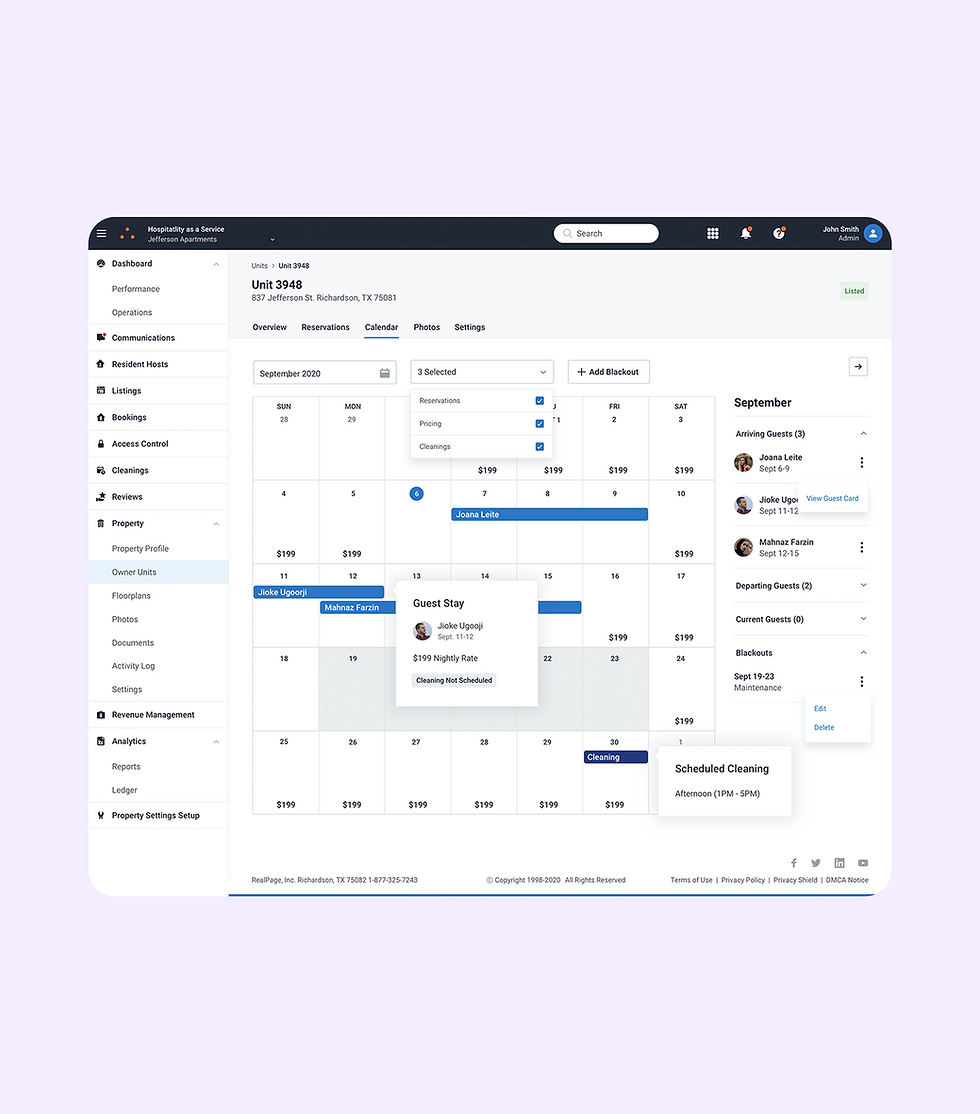.png)
UX Design
Hospitality as a Service
Hospitality as a Service is a modern homesharing solution that empowers property owners to list their empty apartments on a product called Kigo Home which is like Airbnb. Designed for multifamily communities and property managers, this product turns traditional residential units into flexible income opportunities while maintaining oversight and community standards.
Impact
To support the experience, a dedicated admin portal gives property staff and support teams real-time visibility into active listings, booking activity, and resident needs. Admin users can log in to assist residents with onboarding, troubleshooting, or listing management, ensuring a smooth and supported experience on both sides.
What are the perks?

New Revenue Stream for Property Owners
Enables property owners to earn extra income by listing their units on Airbnb—offering financial flexibility while increasing resident satisfaction and retention.

Property Oversight & Control
Through the admin portal, property teams can monitor listings, bookings, and guest activity to ensure compliance with community rules, safety standards, and local regulations.

Enhanced Resident Experience
With built-in support and an easy onboarding process, residents receive hands-on assistance and guidance—creating a hassle-free short-term rental experience.

Differentiator in a Competitive Market
Offering homesharing as an amenity positions the property as forward-thinking and flexible, appealing to modern renters who value income opportunities and lifestyle flexibility.
The Process
Our design process is rooted in clarity, collaboration, and user-centered thinking—from initial discovery through high-fidelity execution. Each phase is structured to ensure the final product is both functional and intuitive, aligning business goals with real user needs.
1. Personas & Targets
This includes identifying primary and secondary user groups, conducting research (such as surveys, interviews, or stakeholder input), and defining clear personas that reflect user needs, behaviors, goals, and pain points. These personas act as reference points throughout the project, helping guide decisions and align stakeholders around user-centered goals.
2. User Stories & Journey Mapping
With our personas and targets defined, we create user stories that articulate real-world scenarios from the user’s perspective. These help prioritize functionality and clarify what each user needs to accomplish. From here, we mapped out user journeys or task flows to identify friction points and opportunities for improvement. This ensures the final experience supports real-world tasks efficiently and intuitively.
3. High Fidelity Designs
Once the experience strategy is defined, we moved into the high-fidelity design phase, where visual and interactive elements come to life. I created polished, using the design system UI screens that reflect real data, incorporate design system components, and account for responsive behavior across devices.

Resident Facing Experience
As part of the Hospitality as a Service platform, there needed to be a consumer facing product for residents to allow them to streamline their hosting experience to list their apartments on RentJoy —safely and seamlessly. The challenge was to make a complex process feel approachable while aligning with platform policies, legal requirements, and property-level restrictions.
The design included an onboarding flow, listing management tools, and built-in guidance to help users understand short-term rental policies and requirements. Special attention was given to accessibility, and user education, ensuring even non-tech-savvy users could confidently list their units.
Key design goals included:
-
Reducing friction in the listing process
-
Maintaining trust through clear communication and safeguards
-
Supporting compliance with property and policies
-
Creating a sense of empowerment and flexibility for residents

Property Owner Experience
In parallel with the resident-facing experience, an admin portal was needed for property managers and support staff to monitor and manage homesharing activity across communities. This backend system serves as a control center—offering visibility into listings, guest activity, and resident engagement, while enabling staff to provide real-time support.
The admin interface includes:
-
A dashboard showing active listings, booking statuses, and user engagement
-
Resident support tools to assist with onboarding, troubleshooting, and listing updates
-
Permissions and controls to manage who can list, how often, and under what terms
-
Alert and notification systems to flag issues and ensure compliance
This part of the product highlights designing for internal enterprise users, balancing usability with operational oversight. It also demonstrates the ability to support multi-role workflows and scalable tools that adapt to different property types and policies.


View Other Projects
Scroll through my projects to find another one to read about that tickles your fancy

.png)
.png)

.png)

.png)
